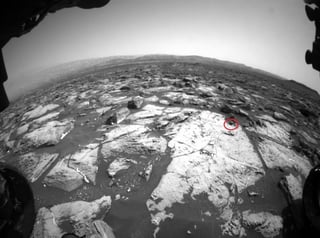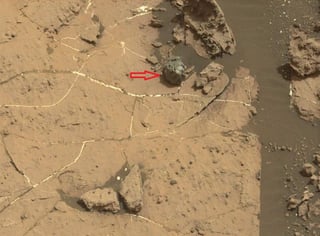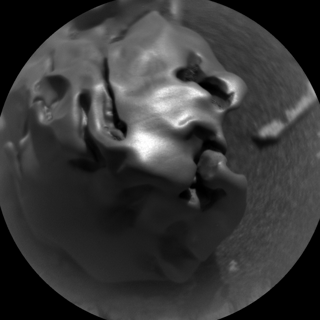"Egg Rock" is a smooth, shiny nickel-iron meteorite found sitting on the surface of Mars on 30-Oct-2016. It is described the next day in Arizona State University's Red Planet Report website: Curiosity: Egg Rock, a small meteorite.
According to Gizmodo's Curiosity Just Found A Freaky Metal Meteorite On Mars:
As Deborah Byrd notes in EarthSky, the surface of Mars is peppered with meteorites, so discoveries like this aren't all that uncommon. Meteorites can last for millions of years on the Red Planet, free from the oxidising and weathering effects of moisture and oxygen.
According to Wikipedia, Martian soil (and presumably blowing dust) contains plenty of perchlorate, a strong oxidizer. Perchlorate on Mars's surface is discussed in this answer, and both perchlorate and peroxide are discussed in this question, with reference to deleterious chemical effects on space suits.
Why then would metallic meteorites remain unoxidized on Mars?
Images from EarthSky, credit NASA/JPL/ASU, captions "October 30, 2016 image via Curiosity rover on Mars" (click for larger size):


